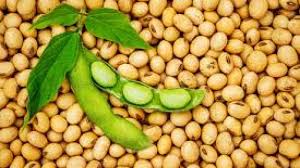East Africa’s bean industry adapts to climate change

Climate change is likely to have a severe impact on East Africa’s bean industry. Beans are a vital crop, with over 200 million people in Sub-Saharan Africa depending on them as their most important pulse.
The global challenges of climate change have significant impacts on agriculture, food and nutrition security, and livelihoods. Farmers face environmental degradation, increasingly extreme weather, and reduced access to natural resources. As a result, there is a need for new research to find innovative solutions to ensure a food-secure future.
Alliance Bioversity International and the International Center for Tropical Agriculture (CIAT) work with local, national, and multinational partners to deliver extensive programs. These programmes find research-based solutions to create sustainable, prosperous, and nourishing food systems and landscapes.
One example of this is the Pan Africa Bean Research Alliance (PABRA). In collaboration with the Kenya Agricultural and Livestock Research Organisation (KALRO), the University of Nairobi, and Egerton University, PABRA has researched and released over 550 new bean varieties across 31 countries. This includes 33 varieties in Kenya (as of June 2022).
These bean varieties help to address a range of consumer needs. Benefits include increased abiotic resistance to factors like heat, drought, cold, and low soil fertility, and increased biotic resistance to a range of pests and diseases. Some varieties also improve cooking and nutritional quality with higher zinc or iron levels. Others even increase product yield. As a result, they help to increase the competitiveness of bean markets by providing customers with improved products. This, in turn, contributes to economic growth.
Beans are a vital crop across sub-Saharan Africa, with over 200 million people depending on beans as their most important pulse. This creates a vast demand for beans of between 750,000 and 1 million MT per year. As a result, beans are economically significant.
Beans are also nutritionally vital, providing protein, fibre, complex carbohydrates, vitamins, and micronutrients. Dry beans (Phaseolus vulgaris L.) are the second most important food crop, after maize, in Kenya.
For the last 2 years, East Africa has received below-average levels of rainfall during the rainy seasons. 70 million people face severe drought conditions. This is the worst drought on record for the Horn of Africa since 1981.
The impact on the agricultural sector across East Africa is significant. Hit particularly hard are the northern and eastern pastoral areas of Kenya and the southern and eastern parts of Ethiopia.
This has resulted in water shortages, rising fertiliser prices, loss of livestock, and crop failure. Consequently, crop varieties that are more resilient to increasingly frequent extreme weather conditions are vital.
These bean varieties help farmers adapt to these changing conditions. For example, PABRAs development of a drought-tolerant variety, the Nyota bean, has been hugely successful.
Released in 2017, it targeted semi-arid counties (which cover 70% of Kenya) including Machakos, Makueni, Narok, and Baringo in Kenya. This variety also matures quickly with a 70-75-day maturity period, whilst other varieties take 90-120 days. In addition, it cooks quickly and is rich in essential micronutrients, including zinc and iron.
The Pan Africa Bean Research Alliance also takes this a step further by promoting integrated crop management (ICM) strategies in combination with planting improved bean varieties. They work closely with farmers through field demonstrations, exchange visits, and printed guidance materials to promote efficient, climate-smart agricultural practices. In this way, PABRA helps farmers to significantly increase yields and be more climate-resilient.
ICM technologies include cropping systems like rotation and intercropping, and the use of organic fertiliser to improve soil fertility. They also include water management practices like infield water harvesting techniques.
PABRA estimates that 6 million farmers (68% of which are women) are aware of, and use, ICM technologies to improve bean production. In addition, PABRA continues to research ICM to find new and improved solutions. One example is assessing the potential for beans to contribute to nitrogen fixation which in turn increases yields of subsequent cereal crops when in a rotation cropping system.
Climate change threatens bean production due to more frequent extreme weather events. Drought has particularly affected East Africa, and temperatures are expected to increase by 2.5°C between 2000 and 2050. This is likely to reduce bean-growing regions by 50%.
Meanwhile, some areas are experiencing excessive rain, for example, in Western areas of Kenya. These conditions, alongside other factors, drive the spread of pests and diseases. They affect the geographic distribution of pests and diseases, as well as the survival rate, migratory routes, and population sizes of pests and vectors.
It is therefore vital to continue researching and implementing climate-smart technologies and practices, like creating more tolerant and resilient crop varieties. As well as, by building the capacity of governments to operationalise key related policies, to create a food-secure future.
